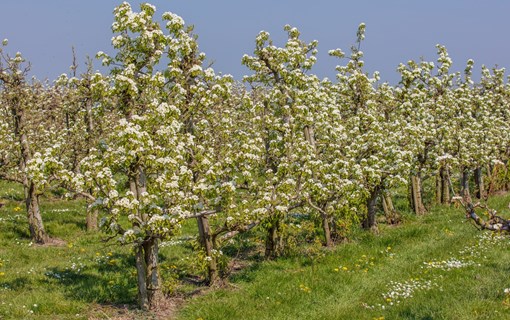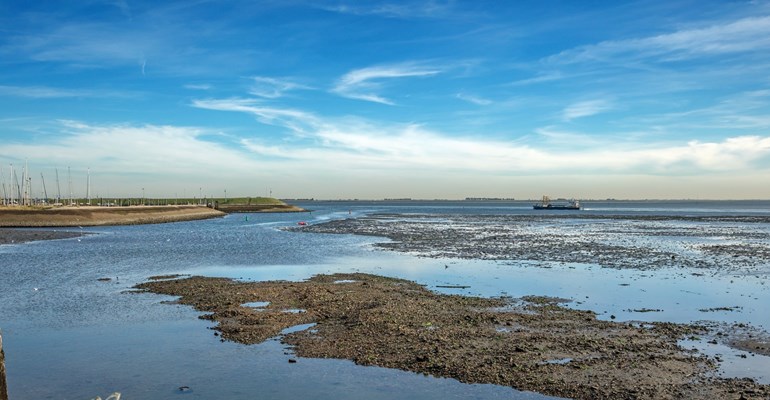
Bloesem & Fruitroute
50 km

Zuid-Beveland, located between the sea arms of the Oosterschelde and Westerschelde estuaries, is a place where the forces of the land and the sea meet. The region is characterised by a landscape of polders, picturesque villages and charming towns. Read more about beautiful Zuid-Beveland below.
In the south is the so-called ‘Zak van Zuid-Beveland’, where you can walk or cycle amongst orchards, farmland and flower-rich dykes. This is the place to enjoy the Zeeland countryside at its very best. The spring is time for the orchards and flowers to blossom. The many ancient dykes reveal the centuries-long struggle that the locals had with the sea and many of the creeks are witness to the fact that dykes succumbed to the forces of the sea in the past.
If you enjoy grand vistas across the water, you can do no worse than come to Zuid-Beveland. After all, it lies between the two large estuaries of the Oosterschelde and the Westerschelde rivers. There are many hiking and cycling trails to help you discover the countryside in Zuid-Beveland. A visit to Fort Ellewoutsdijk is definitely worth your while. Not only will you be taken back in time, you can also marvel at the views across the Westerschelde. Would you like to stay a bit longer in Zuid-Beveland? You can have a great overnight stay in the area.
Zuid-Beveland is home to many picturesque villages and welcoming towns. A cycle tour will enable you to discover the delightful scenery and the villages in between, all with their own unique character and atmosphere. Nisse is a protected conservation area and is one of the prettiest villages in Zuid-Beveland. Around Kwadendamme there are many ancient farmsteads, and if you walk along the dyke in Baarland, you will have magnificent views across the Westerschelde estuary.
Fancy a day out shopping? Goes has a large array of shops. Yerseke is a town famous for its mussels and a visit to the Oesterputten is a must. Are you mad about water sports? If so, you should check out Wemeldinge where you can also enjoy some great food.
Fun events are regularly organised in Zuid-Beveland. Check out our events calenndar for a summary.